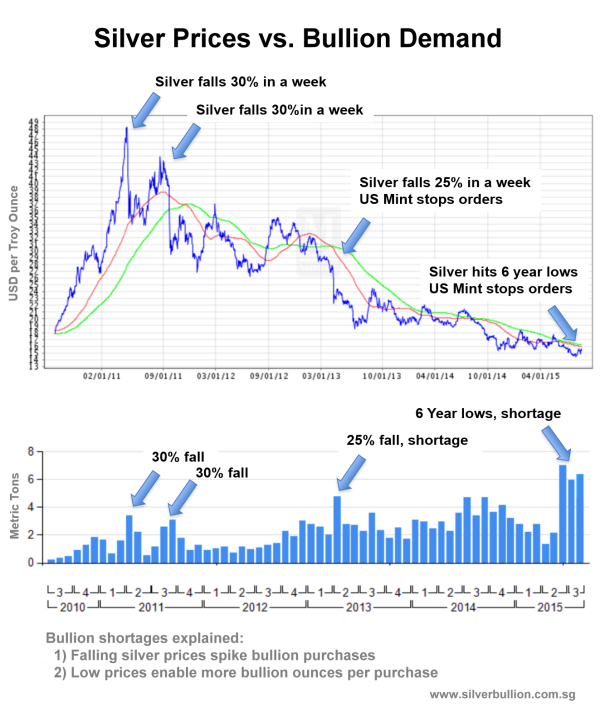Silver Shortages Explained - How Physical Demand has Little Effect on Prices
|
A cursory look at a five year silver price chart reveals wild price swings accentuated by steep and sudden 25% to 30% price drops.
Notice that:
The current shortages are caused by a mint/refinery bottleneck rather than a raw silver shortage, however, as current silver deficits continue we will see raw silver shortages developing. Above ground known supplies are estimated to be only 40,000 metric tons by Thomson Reuters and the silver deficit this year will be around 57.7 Million ounces - representing an expected 4% decline in reserves. With silver prices at six year lows and dwindling physical supplies the paper markets are giving us a chance to own an increasingly rare commodity at cheaper and cheaper prices. The current trends cannot persist. We will either see price increases soon or have much worse shortages accross the industry. Either way, silver is a great value at these prices and is selling fast.
|
